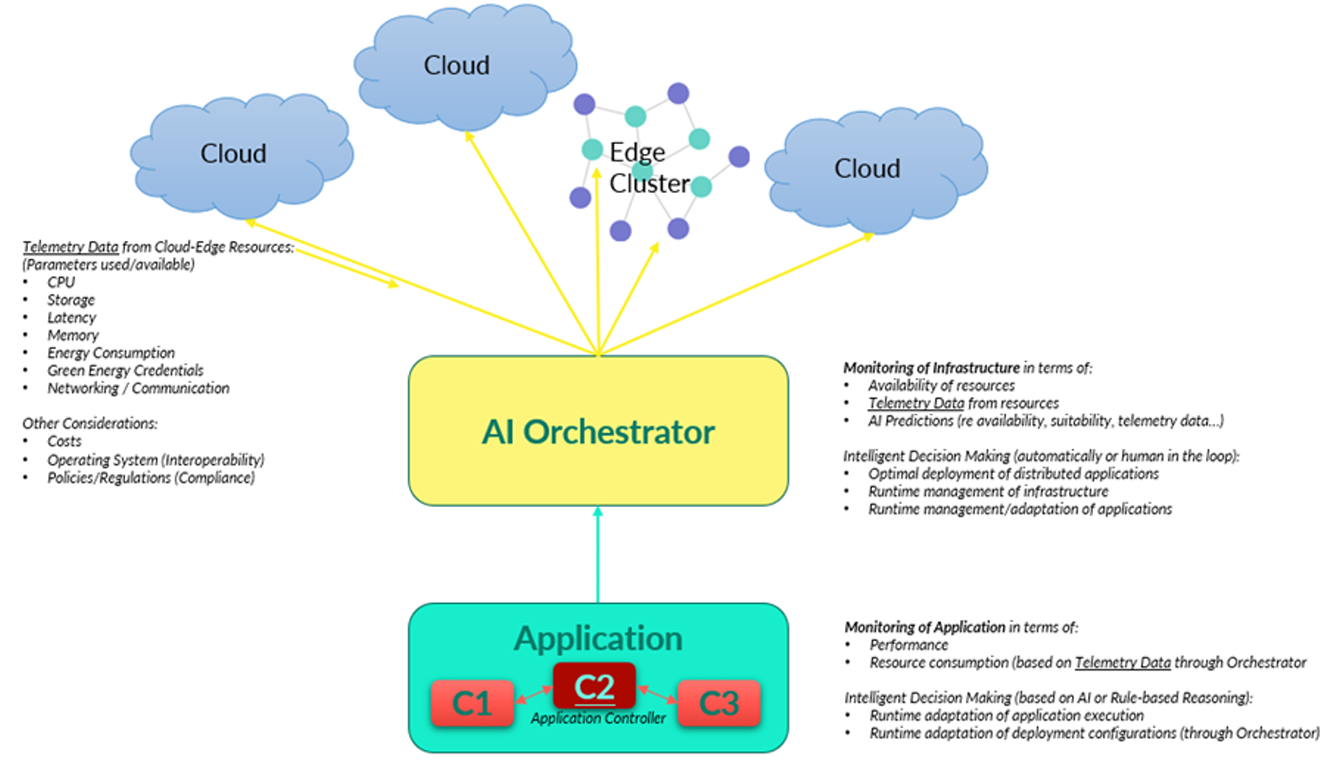In an increasingly connected digital landscape, the boundary between cloud computing and edge devices is blurring rapidly. From autonomous vehicles that must react instantly to their surroundings, to real-time streaming services delivering high-quality multimedia experiences, today’s digital services demand seamless, instantaneous orchestration of computing resources. Yet, current orchestration models often fall short, burdened by limitations in managing diverse, distributed, and dynamic environments efficiently. Recognizing this critical gap, ENACT has developed a pioneering approach that leverages artificial intelligence (AI) for edge-cloud orchestration, setting a new benchmark for agility, adaptability, and intelligence.
Traditional orchestration platforms typically operate with static rule sets or simplistic scheduling algorithms, inadequate for dynamic scenarios encountered across the computing continuum. ENACT fundamentally transforms this landscape by introducing an orchestration model driven by Deep Reinforced Learning (DRL), Graph Neural Networks (GNNs), predictive analytics, and real-time adaptive strategies. Rather than static schedules, ENACT’s orchestrator continually evolves, adapting instantaneously to changing workloads, network conditions, and resource availability.
Central to ENACT’s disruptive contribution is the implementation of intelligent adaptation strategies via a Cognitive Orchestrator, which dynamically manages the distribution and deployment of workloads across edge-cloud environments. By incorporating AI-driven predictions from the AI Forecaster component, the Orchestrator proactively responds to resource fluctuations and potential performance degradation before they manifest into service disruptions. This predictive capability is not merely reactionary; it anticipates future demands, significantly reducing latency, resource wastage, and operating costs. This process is further reinforced by the Application Controller component which allows for the runtime optimization of deployed applications.

Application Control in ENACT
ENACT’s use of AI is exemplified through its integration of advanced predictive models and anomaly detection mechanisms. The AI Forecaster utilizes advanced AI models, pretrained at the Virtual Training Environment (VTE) offered by the project, to predict imminent bottlenecks, identifying potential anomalies within infrastructure operations. Through these predictions, ENACT pre-emptively reallocates workloads, thereby ensuring optimal performance and preventing service outages. Furthermore, ENACT’s innovative anomaly detection leverages cutting-edge algorithms to continuously monitor and maintain system reliability, drastically reducing downtime and operational risks.
Complementing predictive analytics, ENACT employs Deep Reinforced Learning (DRL) Agents along with Graph Neural Networks. These agents optimize a complex trade-off between competing demands: resource allocation efficiency, energy consumption, and system responsiveness. This results in optimal decisions on application distribution across CCC resources and applications’ deployment configurations that human operators or conventional static systems cannot achieve.
A distinct aspect of ENACT’s approach is its extensive use of Dynamic Graph Models (DGMs) for modeling the intricate relationships and dependencies between different resources within the edge-cloud continuum. DGMs analyze complex, interconnected graphs in real-time, capturing intricate patterns in data flow, resource dependencies, and system behavior. This powerful visualization and modeling capability enables the ENACT orchestration engine to dynamically respond to changes of the operational conditions.
Security, compliance, and trustworthiness are integral parts of ENACT’s orchestration model, underscoring the comprehensive nature of its solution. The ENACT platform incorporates the Security Risk Modeller (SRM) and AI Act Compliance Check components, continuously assessing and mitigating risks and ensuring alignment with regulatory frameworks, such as the EU AI Act. This holistic approach guarantees that AI-driven decisions are not only efficient and adaptive but also secure and compliant with regulations in force.
ENACT’s innovative approach to edge-cloud orchestration and AI-driven adaptation represents a radical advancement over traditional methods. By embedding predictive intelligence, autonomous learning capabilities, and real-time adaptive decision-making into the orchestration process, ENACT delivers a transformative platform that meets the rigorous demands of today’s dynamic digital ecosystems.
